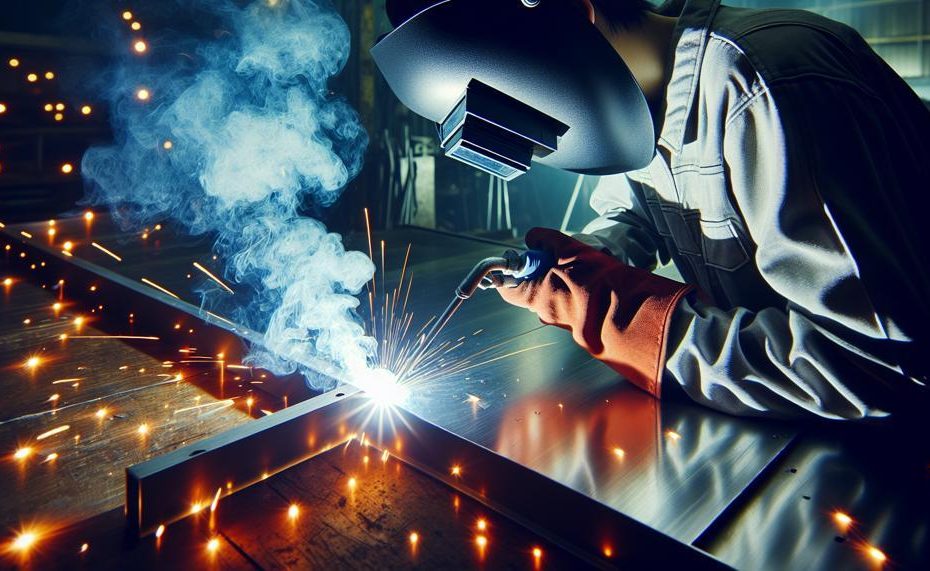Are you tired of constantly switching between different welders for different materials? Are you in search of a more efficient and cost-effective solution for welding aluminum? Well, look no further because we have the answer for you.
In this blog post, we will dive into the topic of using a regular welder for aluminum – yes, you read that right. No need for special equipment or expensive upgrades, just your trusty old welder will do the job. And if you’re skeptical, here are some key points to consider:
- Using a regular welder eliminates the need to purchase a separate aluminum-specific machine.
- It saves both time and money by eliminating the need to constantly switch between machines.
- With proper technique and settings, a regular welder can produce strong and clean welds on aluminum.
So why spend extra money when you can achieve the same results with what you already have? Don’t believe us?
Keep reading to learn more about how to effectively use your regular welder for aluminum welding.
Contents
What Type of Power Source Should You Use for Welding Aluminum
When it comes to welding aluminum, there are numerous power sources available, including AC, DC, and specialized machines like TIG welders.
These power sources differ from a regular welder in terms of their ability to produce a stable and precise arc, which is crucial for welding aluminum.

| Power Source | Advantages | Disadvantages |
| AC | Produces a balanced waveform for a smooth and stable arc. | Can be more expensive than DC power sources. |
| DC | Less commonly used for aluminum welding due to erratic arc production. | May cause problems with heat control. |
| TIG Welder | Precise heat control and use of AC instead of DC. | Specialized equipment and techniques required. |
| MIG Welder | Suitable for heavy-duty applications with the right wire selection and gas choice. | Requires specialized techniques and equipment for welding aluminum. |
Overall, TIG welding is the recommended method for welding aluminum due to its precise heat control and use of AC instead of DC. However, other power sources like MIG or stick welding can also be used with specialized techniques and equipment.
It is crucial to select the right wire feeder and gas for the job, with Argon being the preferred choice for MIG welding aluminum.
Wire Feeder
A wire feeder is a crucial component in the process of welding aluminum, as it helps reduce cycle times and improves reliability and process control. It is a feeding system that supplies a continuous and steady stream of welding wire to the welding torch, which then melts and forms the filler metal for the weld. This process is known as gas metal arc welding (GMAW) or metal inert gas (MIG) welding.
In the case of aluminum welding, wire feeders play an important role in ensuring accuracy and efficiency. With advancements in digital control technology, wire feeders can now respond to sensor feedback from the arc in fractions of a millisecond, resulting in improved start/stop times and increased precision. The use of digital communications also allows for precise information to be transmitted between the feeder and welding machine, enabling better control over motor torque and wire usage.
Wire feed speeds can also be pulsed at high and low rates to create welds that resemble those made with gas tungsten arc welding (GTAW), resulting in heat balancing and more uniform bead widths on long aluminum welds. Moreover, retracting the wire after initial contact with the workpiece helps to create a reliable arc start with less spatter.
To achieve optimal results, wire feeders must be coordinated with the timing of robot motion and power source controls. They are also designed to be easily mounted on robot arms for better feed distance and reliability. Different regions have varying preferences for wire feeder designs, with some using two-roll drives as standard equipment while others prefer four-roll feedheads for straightening wire.
What Kind of Gas Do You Use for MIG Welding Aluminum
When it comes to MIG welding aluminum, the gas of choice is typically 100% argon. This is due to its low ionization value, which makes it easy to switch into a spray transfer or pulsed spray transfer mode – both of which are ideal for welding aluminum. Interestingly, 100% argon gas can also be used for TIG welding aluminum.
To ensure a smooth and efficient welding process, it’s crucial to use the right gas. In this case, 100% argon provides the necessary properties for welding aluminum, making it a top choice among professionals and beginners alike. Its low ionization value allows for easy transition into the desired welding mode, resulting in clean and precise welds.
However, it’s worth noting that 100% argon is not the only gas option for welding aluminum. Other gases such as helium, argon-helium mixtures, and argon-helium-carbon dioxide blends can also be used.
Each of these options has its own unique properties and applications, so it’s important to choose the right gas based on the specific project at hand.
What Kind of Welding Gun Do You Use for MIG Welding Aluminum
When it comes to MIG welding aluminum, the best type of welding gun to use is a spool gun. This specialized gun is designed specifically for softer wires like aluminum and is able to compensate for its softness.
One major advantage of using a spool gun is that it eliminates the common issue of birdnesting. This occurs when the wire becomes tangled or stuck inside the cable liner of the wire feed speed system.
The importance of using the correct welding gun in MIG welding aluminum cannot be overstated. This is because aluminum wire is much softer than steel wire and requires precise control to avoid potential issues such as burn-through or lack of fusion.
The use of a spool gun allows for better control and accuracy, resulting in high-quality welds. In addition, it can also help minimize downtime and increase productivity as it reduces the need for troubleshooting and fixing issues related to birdnesting.
Furthermore, the use of a spool gun also enables easier feeding of the softer aluminum wire, preventing it from getting tangled or snagged. It also provides better accessibility as it can be held closer to the weld joint, allowing for improved visibility and control during the welding process.
What Kind of Wire Do You Use for Mig Welding Aluminum
These two types of wires have distinct properties that make them perfect for welding aluminum.
0 Wire:
The 0 wire is a versatile aluminum wire that contains silicon, making it more forgiving for welders. This wire is highly recommended for novices or those with limited experience in welding aluminum. The presence of silicon in the wire creates a stable and consistent arc, making it easier to control and produce top-notch welds. It also results in less cracking, a common issue when welding aluminum.
Moreover, the 0 wire produces a shiny and bright finish, giving the final product an appealing appearance compared to other types of wires.
6 Wire:
On the other hand, the 6 wire is known as a high-silicon wire and is preferred by experienced welders for its exceptional performance. This type of wire contains a higher amount of silicon, resulting in a hotter and more fluid puddle during welding.
This allows for better penetration and fusion, resulting in stronger and more durable welds.
The 6 wire is also less prone to cracking, making it a popular choice among professional welders.
Both the 0 wire and the 6 wire are highly recommended for MIG welding aluminum due to their distinct properties that help achieve top-quality welds.
The 0 wire is best suited for beginners or those with less experience, while the 6 wire is preferred by more experienced welders for its exceptional performance and strength.
Technique
Aluminum welding is a challenging task, but with the right techniques and equipment, it can be done successfully.
The key techniques for using a regular welder for aluminum are selecting the proper welding method, choosing the correct wire feeder, using the appropriate gas, and considering the type of aluminum wire to use.
Welding Method:
Although any power source can technically be used for welding aluminum, TIG welding is highly recommended due to its precise heat control and use of AC current.
However, MIG and stick welding can also be used with specialized techniques and equipment.
Wire Feeder:
One crucial factor in successfully welding aluminum is selecting the right wire feeder.
For MIG welding, it is recommended to use a spool gun or push-pull wire feeder to ensure precise wire feeding and prevent birdnesting.
Gas Selection:
When MIG welding aluminum, choosing the proper gas is essential for optimal results.
Argon is the preferred choice due to its stability and inert properties, which help prevent oxidation and produce clean welds.
Aluminum Wire Selection:
Different types of aluminum wire have their advantages, so it is crucial to consider the desired outcome and material thickness when selecting a wire.
Pure aluminum wire is versatile and ductile, making it suitable for various applications. However, ER4043 offers better corrosion resistance for more demanding projects.
Also Read: How Much Does A Certified Welder Make In California?
Conclusion
In conclusion, the use of a regular welder for aluminum is not only feasible but also a budget-friendly and effective option.
By eliminating the need for a separate aluminum-specific machine, you can save both time and money.
With proper technique and settings, your trusty old welder can produce strong and clean welds on this notoriously tricky metal.





